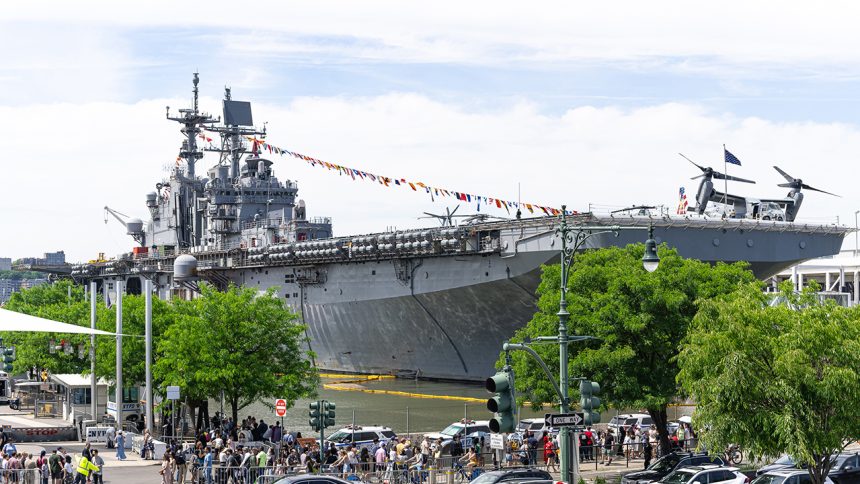The USS Bataan recently sailed into New York City for Fleet Week 2024 festivities. Let’s look back as well as preview what’s ahead, for this twenty-seven year old, US Navy Amphibious Assault Ship.
The first official Fleet Week in New York City took place in 1988. It is scheduled to generally coincide with the Memorial Day holiday weekend. Fleet Week provides a unique opportunity for the residents of the tri-state area, to meet and talk with Navy Sailors & Aviators, Marines, and Coast Guardsmen. In addition, Fleet Week presents to the public the rare occasion to board ships and view firsthand, the latest hardware associated with the various services.
Long gone are the days when New York City was host to United States aircraft carriers. A lot of this has to do with the fact that for all intents and purposes, New York City Harbor is a nuclear free zone. The last non-nuclear powered carrier, (the Kitty Hawk) decommissioned in 2009, leaving the entire current fleet of carriers, nuclear powered. Therefore, we have not seen a US aircraft carrier participating in NYC Fleet Week, for many years. This scenario creates a perfect opportunity for the conventionally powered and equally impressive, US Navy Amphibious Assault Ships, to be front and center in the parade of visiting vessels.
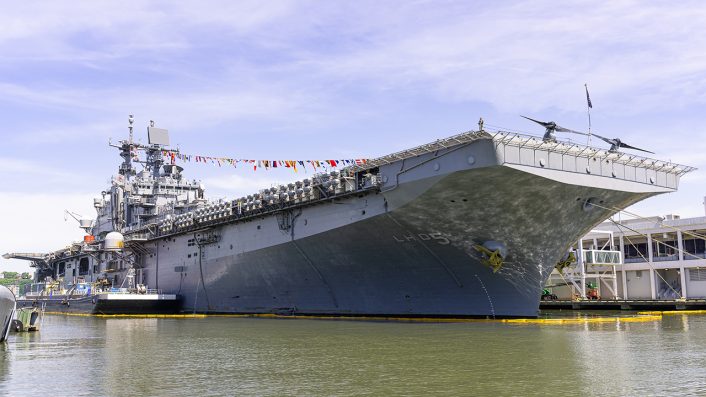
The Aviationist was fortunate to be able to interview several highly talented and dedicated service men and women on-board the USS Bataan, during Fleet Week. We sought to get an understanding of the most recent extended deployment, as well as receive an update on future plans for the ship.
Brief History of the Bataan
The Wasp-Class USS Bataan, is named after the famous World War Two battle in the Philippines. The ship was commissioned in 1997, and during initial training on the US East Coast, sailed to New York City after the 9/11 attacks on the World Trade Center, for potential use of the ship’s medical facilities.
The Bataan was also instrumental in the defeat of the Taliban, as marines from the ship were moved into Afghanistan, to establish a forward operating base for US forces, aiming to seize the Taliban stronghold of Kandahar. Additional military engagements for the Bataan include, acting as a Harrier base for two squadrons of AV-8Bs, who launched air strikes and close air-support missions during the early stages of the Iraq War, in 2003.
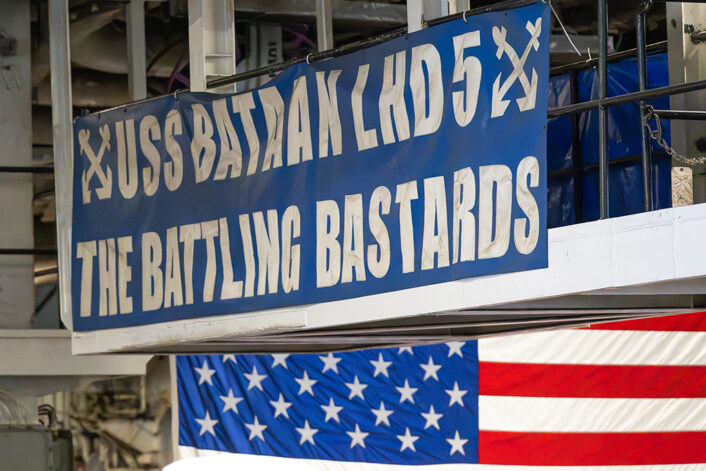
Subsequent operational deployments include, participation in the 2011 enforcement of the no-fly-zone over Libya, as well as taking part in the initial air-strikes against Islamic State targets, in Iraq and Syria, during the 2014 Iraq air campaign. Humanitarian relief efforts also played a prominent role for the Bataan and its crew, they include, Hurricane Katrina aid operations, and in 2010, Haiti earthquake relief assistance.
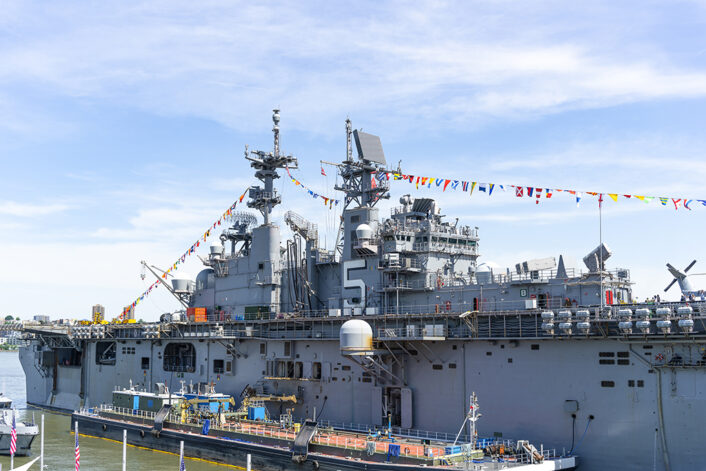
Imperative to mention, is the testing and evaluation function that ships play in the roll-out of new aircraft types. In 2005, the Bataan served as a naval testbed for the MV-22B Osprey tiltrotor aircraft. The work included operational and live fire tests. In 2009, the Bataan hosted the first operational deployment of the Osprey, with ten MV-22’s from VMM-263, Marine Corp Air Station, New River.
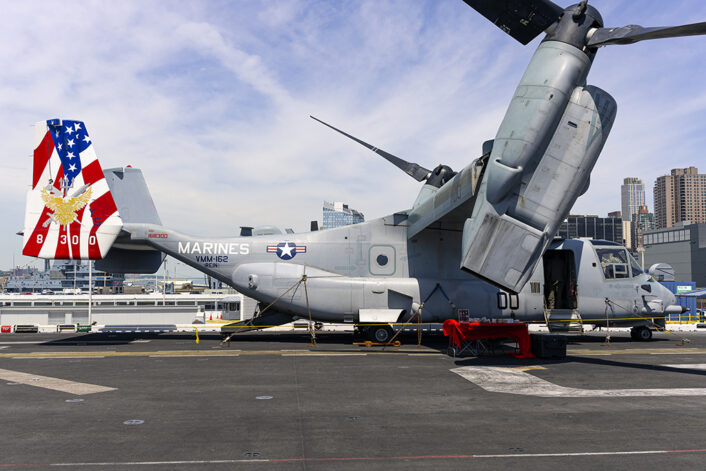
Most recent deployment
As the crowd of on-lookers watched the 40,500 ton, 843 foot, USS Bataan gingerly cruise into New York Harbor in late May, very few were aware of the ships mission, during the past nine months, or, the high level of intensity required, to successfully complete its lengthy deployment.
In late March of 2024, more than 4,000 Sailors and Marines assigned to the Bataan Amphibious Ready Group (ARG) and the US Marine Corps embarked 26th Marine Expeditionary Unit (Special Operations Capable) (MEU(SOC), returned to Hampton Roads, Virginia, following an extended, almost nine month deployment.
Flying the flag of the Osprey equipped Marine Medium Tiltrotor Squadron 162 (Reinforced), VMM-162 (Rein), were the following embarked aircraft. Six AV-8B Harriers, four CH-53E Super Stallions, eight MV-22B Ospreys, four AH-1Z Vipers, three UH-1Y Venoms, as well as three US Navy MH-60S Seahawks.
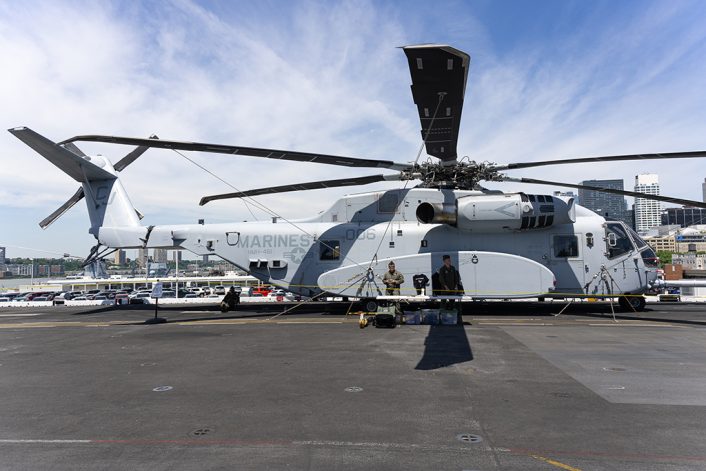
During the deployment, all of the embarked aircraft, including the attachment of AV-8B’s, were temporarily assigned to VMM-162 (Rein), “Golden Eagles”. The AV-8Bs which were sourced from Marine Attack Squadron 231 (VMA-231) “Ace of Spades”, MCAS Cherry Point, were reassigned with ship markings, including “YS” tail codes, and “Golden Eagles” squadron badges, which are standard on VMM-162’s Ospreys.
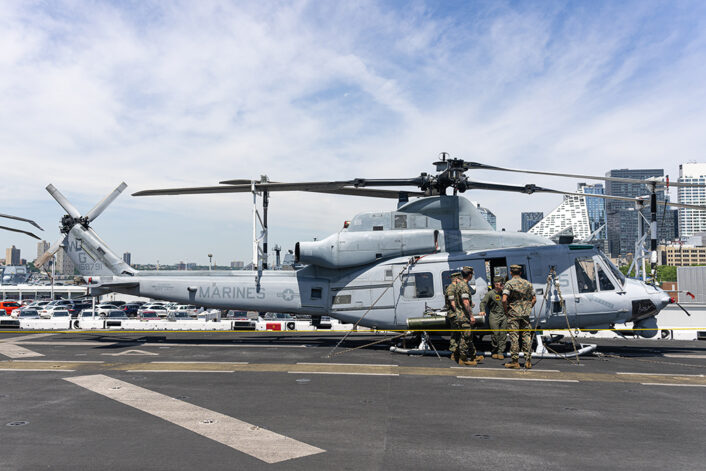
Commenting on the recent Bataan deployment, US Marine Osprey pilot, Captain Jamil Butler, of VMM-162, was particularly proud of the “ballet like coordination” his Osprey squadron had with the attachment of Harriers embarked on the Bataan. Furthermore, Captain Butler went on to describe that there was minimal operational impact, of his squadrons Ospreys, as a result of the temporary Osprey stand down, following the fatal crash of a US Air Force Osprey, off the coast of Japan, in November of 2023.
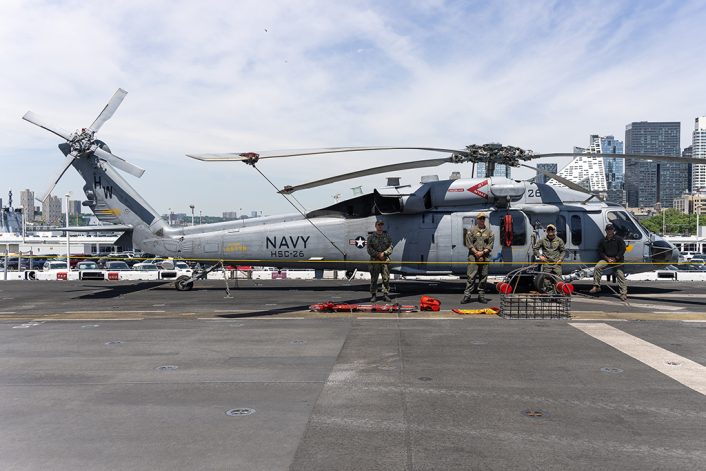
During the deployment, the Bataan Amphibious Ready Group supported a wide range of interoperability training, exercises, and operations covering the High North, Baltic Sea, Eastern Mediterranean, Arabian Gulf, Red Sea, and the Middle East. This deployment also marked the first time a Marine Expeditionary Unit with the Special Operations Capable (SOC) designation, has been employed in over two decades.
Following the outbreak of conflict between Israel and Hamas, the Bataan participated in Operation Prosperity Guardian in the Red Sea, helping to deter further escalation, following the attacks on international commercial shipping by Iran backed Houthi militants, in Yemen.
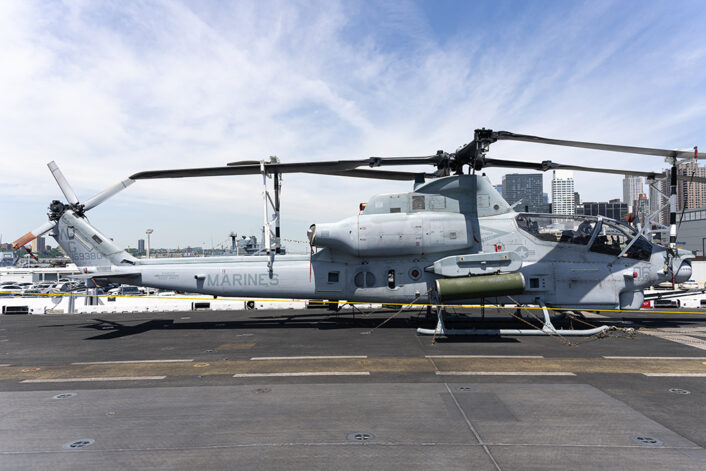
Looking Ahead
In previewing future plans for the USS Bataan, I spoke with two US Navy sailors aboard the ship, during Fleet Week. They had recently returned from the latest deployment, and have an intimate knowledge of the ship’s aviation operations, and its aircraft. Aviation Boatswain’s Mate Aircraft Handler (ABH3), Zykeria Jones, and Air Traffic Controller (AC2), Damion Young, were extremely grateful for returning stateside, (after completing a successful deployment), and were eager to talk about the ship, past and future.
My first question pertained to the immediate days and weeks ahead. Where is the ship heading after NYC Fleet Week 2024? AC2 Young and ABH3 Jones responded, with the following. “So we push out of New York on the Tuesday after Fleet Week. We go home to Norfolk, Virginia. We have a wind down period, then there is a change of command for the Bataan. After the change of command, we then go from a surface ready ship to a maintenance and preservation ship. We are shifting our focus from mission ready to preparing the ship for maintenance, as we go into the yard”.
As far as what is in store for the Bataan longer-term, I wanted to know. Will the ship need any transitional modifications to accommodate the F-35B, as the AV-8B Harriers are retiring shortly, and if so, what is the process, and timeframe? AC2 Young, and ABH3 Jones stated the following. “Well, we are going into the yard in a month. We are basically going to take the entire deck up, all of the non-skid, all of the pad eyes, and we are going to redo everything. That way the F-35s are able to land onto the deck without ruining the non-skid, without the temperature being too hot to destroy the deck, or pad eyes. We have the yard locked for approximately two years, so 2026, 2027 we should be ready to sail again, it’s all about getting the job done correctly and timely. Our next Bataan deployment will be entirely different, we are really looking forward to it”.
Post Interview Note
Of the Wasp-Class Amphibious Assault Ships, the following have the required modifications, and can accommodate operation of the F-35B Lightning II. USS Wasp (LHD-1), USS Essex (LHD-2), USS Boxer (LHD-4) and the USS Makin Island (LHD-8).

